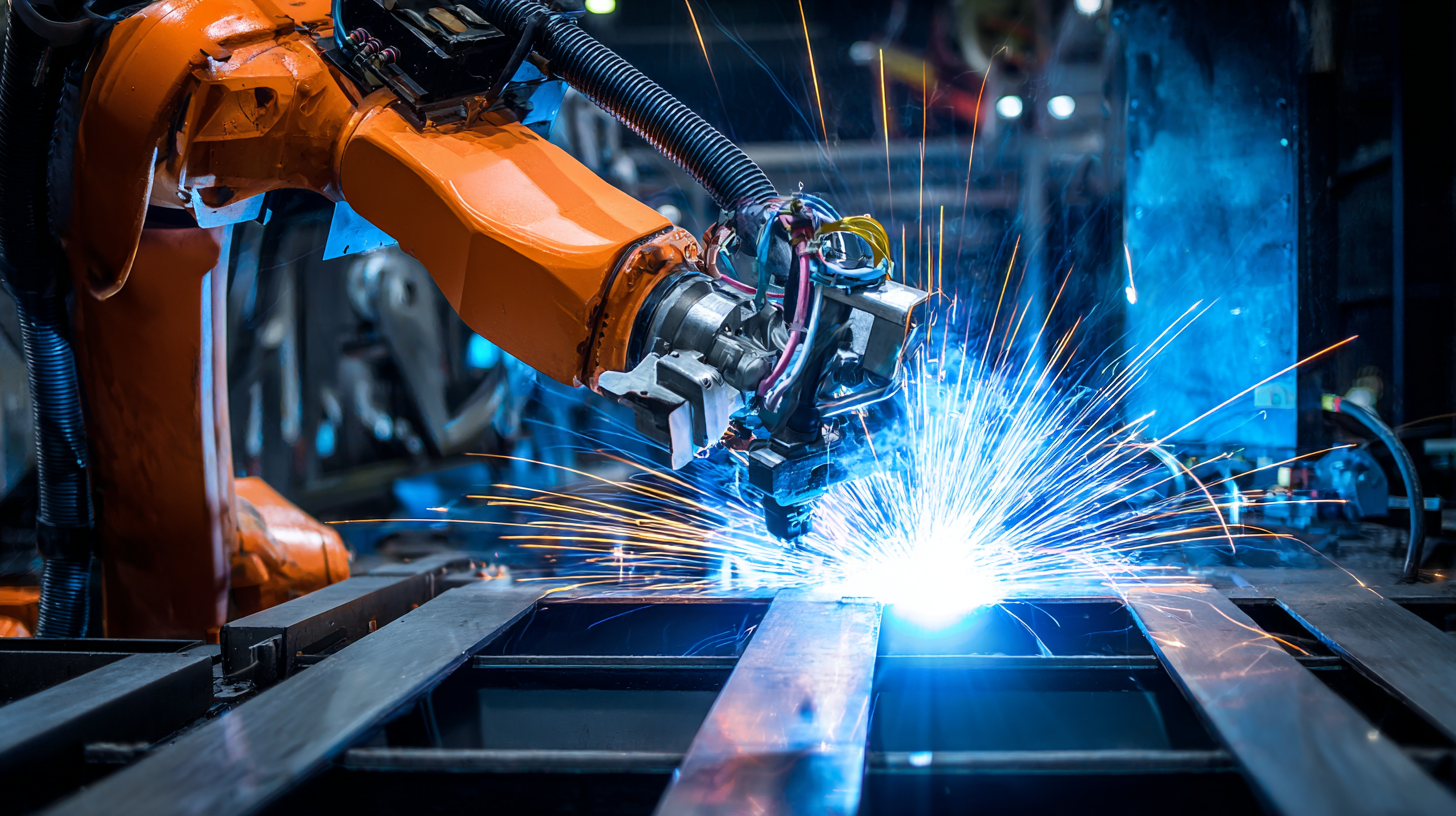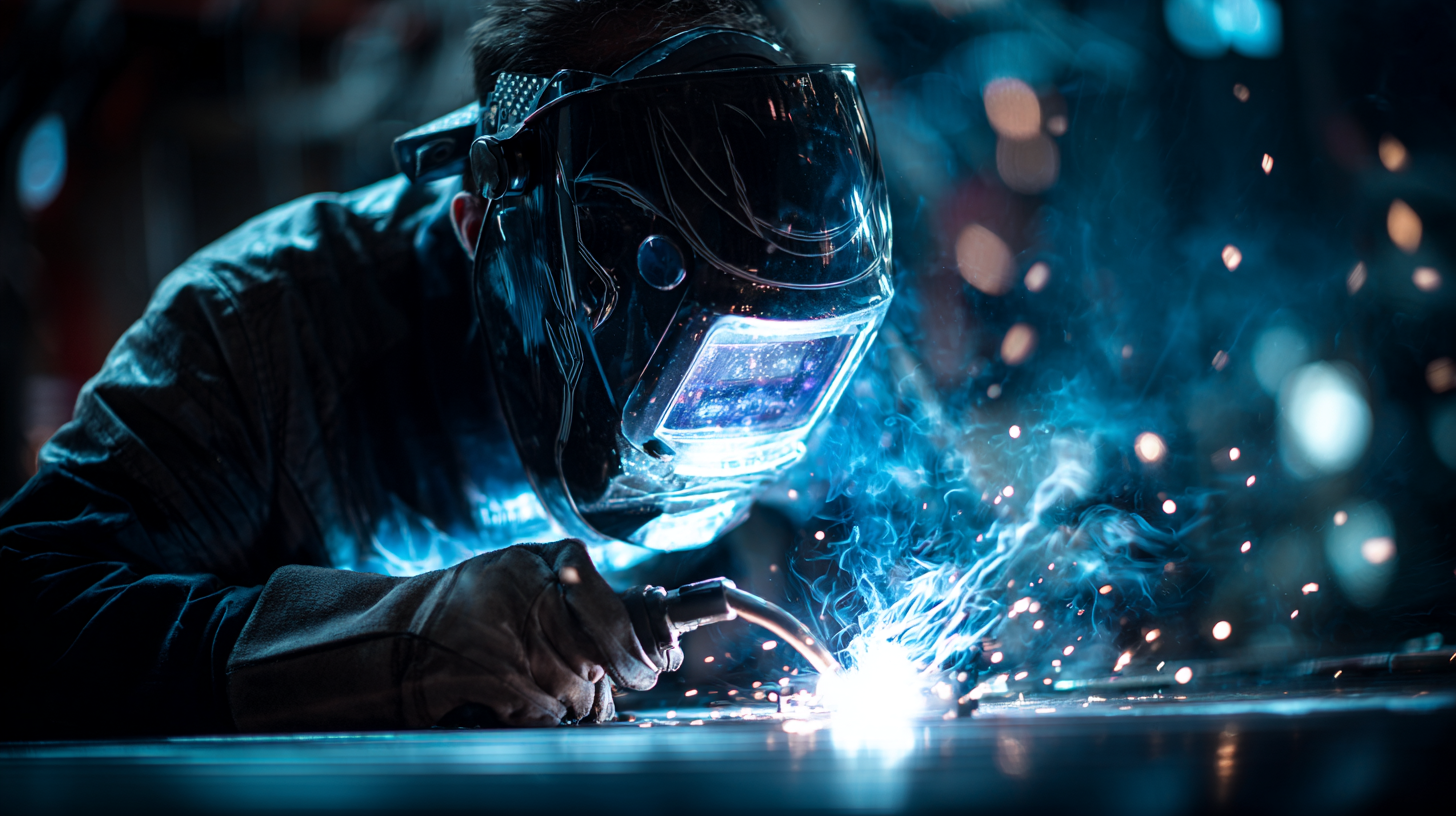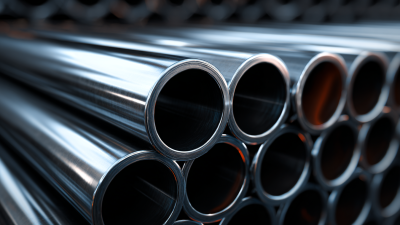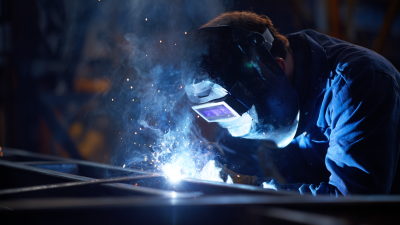Exploring the Impact of Robotic Welding Technology on Manufacturing Efficiency and Quality Metrics
 Robotic welding is rapidly transforming the manufacturing landscape, significantly enhancing both efficiency and product quality. According to a report by the International Federation of Robotics, the implementation of robotic systems in welding processes has resulted in productivity increases of up to 30%, while simultaneously reducing error rates by approximately 50%. This advancement underscores the pivotal role robotic welding plays in meeting the competitive demands of modern manufacturing. Furthermore, a survey conducted by the American Welding Society revealed that 70% of manufacturers using robotic welding technology reported improved weld consistency and precision, leading to higher customer satisfaction and reduced rework costs. As industries continuously strive for operational excellence, understanding the multifaceted impact of robotic welding on manufacturing efficiency and quality metrics becomes essential for future growth and innovation.
Robotic welding is rapidly transforming the manufacturing landscape, significantly enhancing both efficiency and product quality. According to a report by the International Federation of Robotics, the implementation of robotic systems in welding processes has resulted in productivity increases of up to 30%, while simultaneously reducing error rates by approximately 50%. This advancement underscores the pivotal role robotic welding plays in meeting the competitive demands of modern manufacturing. Furthermore, a survey conducted by the American Welding Society revealed that 70% of manufacturers using robotic welding technology reported improved weld consistency and precision, leading to higher customer satisfaction and reduced rework costs. As industries continuously strive for operational excellence, understanding the multifaceted impact of robotic welding on manufacturing efficiency and quality metrics becomes essential for future growth and innovation.
The Evolution of Robotic Welding Technology in Manufacturing
Robotic welding technology has undergone significant evolution over the years, transforming the manufacturing landscape. Initially introduced in the mid-20th century, robotic welding systems primarily consisted of simple mechanical arms programmed for basic repetitive tasks. However, advancements in sensors, artificial intelligence, and computer control have gradually enhanced their capabilities. This evolution has enabled robots to adapt to complex welding tasks, ensuring precision and consistency that was difficult to achieve with manual methods.
As the technology continues to evolve, we see the integration of advanced features such as real-time monitoring and adaptive control systems, which allow robots to adjust parameters on-the-fly based on the conditions of the workpiece. This evolution not only improves welding quality but also significantly boosts manufacturing efficiency.
High uptime, reduced error rates, and the ability to work in various environments without fatigue are key benefits that modern robotic welding systems bring to manufacturing processes, ultimately leading to a more competitive production landscape.
Assessing the Efficiency Gains Achieved Through Robotic Welding
Robotic welding technology has significantly transformed the manufacturing landscape, particularly in the automotive industry, where efficiency and quality are paramount. One of the most prevalent processes is resistance spot welding, which plays a crucial role in assembling vehicle bodies. The recent advancements in intelligent resistance welding online detection systems have further enhanced this process, allowing for real-time monitoring and adjustment. This ensures that weld quality remains consistently high, thereby reducing rework and scrap rates.
The integration of robotic systems in welding not only accelerates the production cycle but also optimizes resource allocation. By automating welding tasks that were traditionally performed manually, manufacturers can mitigate human error and increase throughput. Additionally, the precision offered by robotic welding reduces defects and improves the overall integrity of welded structures. Consequently, manufacturers are witnessing substantial efficiency gains, reflected in shorter lead times and improved quality metrics that meet stringent industry standards. The shift towards automation and smart technology in welding processes exemplifies the ongoing pursuit of excellence in manufacturing.
Quality Control Metrics in Robotic Welding Operations
In the realm of robotic welding operations, quality control metrics play a pivotal role in assessing the overall effectiveness of the automation process. Unlike traditional welding methods, where human error can significantly influence outcomes, robotic welding systems employ precise programming and consistent motion to enhance quality. Key metrics such as weld strength, uniformity, and dimensional accuracy are meticulously monitored through high-resolution sensors and real-time feedback mechanisms. This data not only ensures compliance with industry standards but also facilitates continual improvement in welding practices.

Furthermore, the integration of advanced technologies such as machine learning and artificial intelligence into robotic welding systems encourages proactive quality control measures. By analyzing historical performance data, these systems can identify patterns and predict potential defects before they occur. This predictive capability enables manufacturers to implement corrective actions swiftly, reducing scrap rates and rework.
Ultimately, the emphasis on quality control metrics allows companies to achieve superior product integrity while maximizing operational efficiency, thereby making robotic welding a cornerstone of modern manufacturing.
Comparative Analysis of Traditional vs. Robotic Welding Processes
The shift from traditional welding processes to robotic welding technology has marked a significant evolution in manufacturing efficiency and quality metrics. Traditional welding often relies on manual techniques, which can introduce inconsistencies due to human error, fatigue, and varying skill levels among welders. These factors can lead to increased rework times and material waste, ultimately affecting productivity. In contrast, robotic welding systems offer precision and repeatability, employing programmed paths and advanced sensors to ensure uniform weld quality. This automation not only minimizes deviations but also streamlines the production workflow.

A comparative analysis highlights the distinct benefits of robotic welding over traditional methods. While initial investments in robotic systems may be substantial, the long-term gains in productivity and reduced labor costs prove advantageous. Moreover, robotic welding can operate at a higher speed, significantly increasing output rates while maintaining high-quality standards. The ability to continuously monitor and adjust welding parameters in real-time further enhances the quality of welds produced, resulting in fewer defects and a more reliable end product.
As industries continue to embrace automation, the transition to robotic welding is likely to redefine manufacturing benchmarks, setting new standards for efficiency and quality.
Future Trends in Robotic Welding and Their Implications for the Industry
The robotic welding industry is witnessing significant advancements, shaping the future of manufacturing efficiency and quality. According to recent market analyses, the global welding equipment market is anticipated to grow from approximately $1.596 billion in 2025 to an impressive $2.722 billion by 2033, reflecting a robust compound annual growth rate (CAGR) of 6.9%. This growth is driven by the increasing demand for automation and precision in welding processes across various sectors, including automotive, aerospace, and construction.
As robotic welding technologies evolve, the impact on production methods and quality assurance is profound. The global electrode welding robots market, particularly in arc welding, is set to expand with a noticeable shift towards automated solutions. The market landscape indicates a growing preference for solid and flux-cored wire applications, especially within industries relying on heavy machinery and structural components. The integration of artificial intelligence in robotic welding systems enhances adaptability, resulting in lower operational costs and improved safety metrics. The industry's adaptation to these trends will be crucial as manufacturers navigate the complexities of supply chain disruptions and fluctuating demand post COVID-19.
Exploring the Impact of Robotic Welding Technology on Manufacturing Efficiency and Quality Metrics
| Metric | Before Robotic Welding | After Robotic Welding | Percentage Improvement |
|---|---|---|---|
| Production Speed (units/hour) | 50 | 80 | 60% |
| Defect Rate (%) | 5 | 2 | 60% |
| Labor Cost Reduction (%) | 30 | 10 | 66.67% |
| Overall Equipment Effectiveness (OEE) (%) | 70 | 90 | 28.57% |
| Production Downtime (%) | 20 | 5 | 75% |
Related Posts
-

Exploring the Versatility of Metal Tubes: Innovative Applications You Didn't Know About
-

Unlocking Precision and Efficiency in Manufacturing with Advanced Laser Cutting Machines
-

Exploring Advanced Metal Welding Techniques: Boosting Efficiency and Quality in Industrial Applications
-

Unlocking Efficiency How Nesting Software Revolutionizes Material Cutting Processes
-

Exploring the Future of Metal Cutting Technologies: Trends, Innovations, and Market Insights for 2024